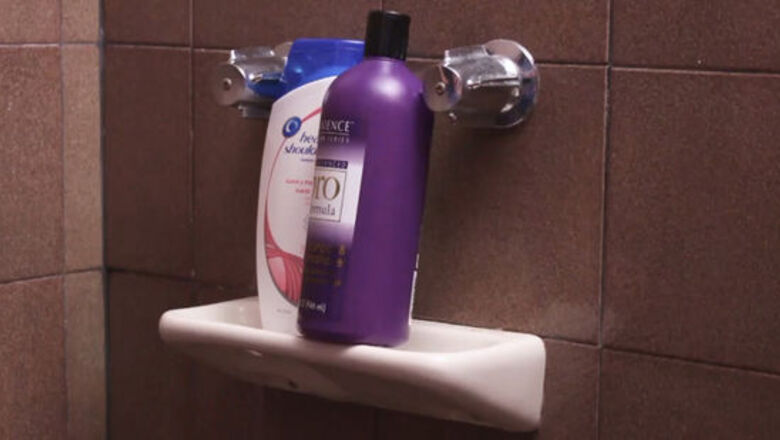
views
Preparing to Clean
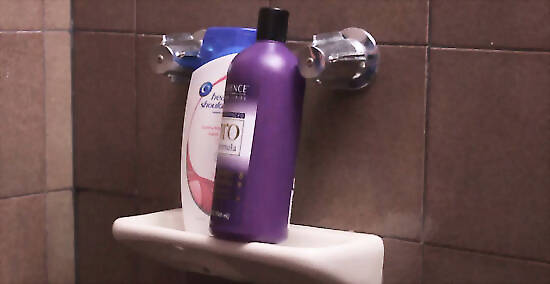
Remove all the items that don't belong in your bathroom. Take out everything that doesn't belong, such as clothes, cups, and trash. Also, move out any little side tables or movable storage cabinets so that you can clean under them.
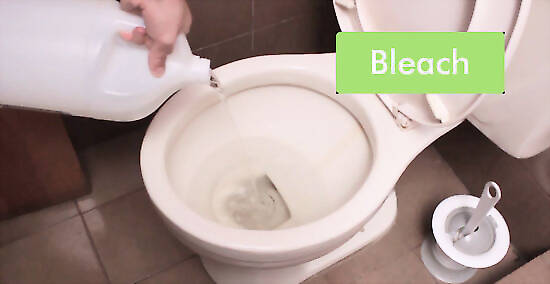
Pour some bleach or another disinfectant into the toilet bowl. Put the toilet brush inside the bowl, helping to sanitize the brush for cleaning. Let the cleaner sit for 10 to 15 minutes so that it can work. Make sure the door is open and the fan is on to ensure proper ventilation. For a green alternative, mix a tablespoon of baking powder into about a quart of 75/25 mix of white vinegar and water.
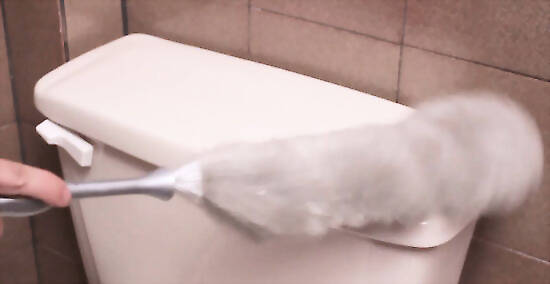
Dust from the top down. Clean cobwebs in the corners of the bathroom, and brush other dust and dirt directly onto the floor to sweep up later. A duster works great for this, but you can also use the broom. If you've got delicate wallpaper, place a soft, clean, dry rag over the bristles.
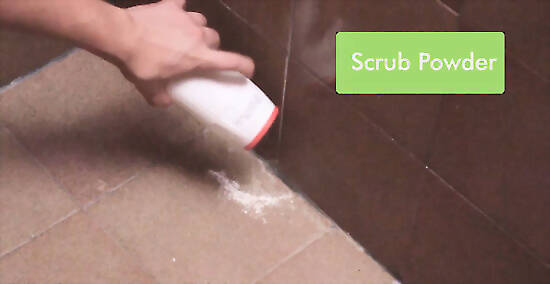
Apply any scrub powder to especially dirty areas. If you've got lime and build-up in the tub, sink, or around faucets, damp those areas slightly and sprinkle with scrubbing powder like Comet. Letting it sit for 10-15 minutes while you do other things will help to work loose the dirty patches and make your scrubbing go much more smoothly. Be sure to read the label and ensure that you're using an appropriate product and won't damage your surfaces. Test it out on a non-visible spot before you actually use it. For a greener option, sprinkle surfaces with baking soda and then spray them with vinegar. Let the mixture sit for 10 to 15 minutes and then wipe the vinegar and baking soda away with a damp cloth.
Cleaning Surfaces
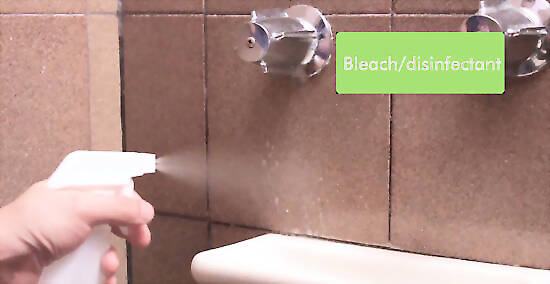
Wipe the walls, windows and/or ceiling. If you have mold on the ceiling start with spraying a water bleach/disinfectant solution on it and let it rest for a couple of minutes, do the same with the walls (if they are tiles) or use another cleaning product. With a sponge or a clean rag, scrub the tile surfaces you've sprayed. Rinse it carefully to avoid any stripes and dry it with a clean rag. A 50:50 vinegar and water solution is also a great option for cleaning walls and other surfaces. Just make sure that you do not mix vinegar with bleach since this can create a toxic gas. It's a good idea to wear rubber gloves while you're scrubbing, to keep your hands from drying out if you're using harsh products.
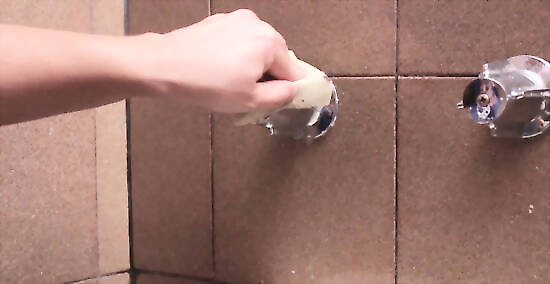
Clean the shower. Spray cleaning product on the shower walls, and the shower head and let it rest for a couple of minutes. Spray cleansers made especially for getting rid of soap scum work very well on tubs that haven't been cleaned in a while. For hard water areas that are prone to green and rust-colored stains, a cleanser made for eliminating calcium, lime and rust is probably what you need. Never use abrasive cleaners or green abrasive scrub pads or steel wool on porcelain fixtures, as they will quickly dull the finish. Soak the showerhead. If the showerhead is clogged with hard water buildup or soap scum, remove it and soak it in vinegar overnight or fill a sandwich bag with vinegar and secure it around the showerhead with a rubber band. Then, scrub the water holes with an old toothbrush the next day to get any remaining buildup. Go back over the shower and scrub the walls, faucet and shower head with a soft sponge, rinse well with the hottest water and dry with a towel. You can shine the faucet with a dry towel. Don't forget the shower curtain; it is also prone to mildew. A solution of about 2/3 water, 1/3 bleach in a spray bottle can be handy for getting rid of mildew spots. Or you can take it down and wash it in hot water with a small amount of soap and bleach.

Scrub the sink and counter area. Scrub all the soap scum and toothpaste off with a small amount of cleaner, rinsing your sponge thoroughly as you go along. Don't forget to clean your trashcan, toilet paper holder, tissue holder, toothbrush holder, doors, and other items in your bathroom. An old toothbrush or cotton swabs can be handy for getting the junk out from between the tap and handles. Be sure never to clean the sink and counter area with the same rag or paper towel you used to clean the toilet. This can spread leftover disease-causing germs to your sink and counter area. To prevent this you can use a specific rag which you use to clean only the toilet. Wipe off the fronts and tops of cabinets and drawers. You'll probably want to use hot, soapy water for this purpose. If you're worried about germs on these surfaces, add a bit of bleach to your soapy water. Wash your toothbrush holder like you would wash a cup or bowl. Add a squirt of dish soap to the inside of it, then fill it with warm water and scrub the inside with a bottle brush or sponge. Rinse it out well to remove the soap.
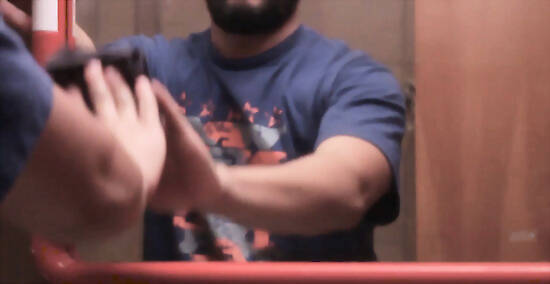
Spray glass cleaner or water on the mirror and wipe it. Use glass cleaner or water, and wipe the excess water off with a towel or squeegee. Wipe the mirror dry with a towel after spraying it with glass cleaner or water. A 50:50 mixture of vinegar and water also works well to clean glass and other surfaces.

Clean the outside of the toilet. Wipe all around the outside of the toilet, starting with the flush handle so as not to re-contaminate it. Use a cloth soaked in a disinfectant cleaner. Thoroughly wash and rinse all exterior surfaces of the toilet bowl, including the underside and flared base, the top and underside of the seat and lid, and the hinges and their mounting area with a cloth and detergent or similar cleaner. Don't forget to use a cloth specially for cleaning the toilet, or a paper towel. If you use a paper towel, throw it away. Don't flush it.
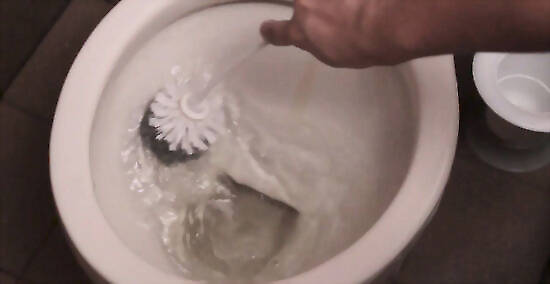
Scrub the bowl with a toilet brush and flush. Coat the inside of the bowl with a viscous acidic cleaner generally sold in an angle-necked bottle. Take special care to cover the entire inside edge of the rim; it'll run down toward other areas. Allow the cleaner to soak for half an hour or more before scrubbing the entire bowl including under the rim with a toilet bowl brush, let it soak a little longer after it's been well-distributed though thinned by the initial scrubbing, then scrub some more and flush it away. If you have hard water stains in the toilet bowl, use a pumice stone to remove them. Dip the pumice stone in water and scrub the stains gently. Look for a pumice stone in the cleaning section of your grocery store.
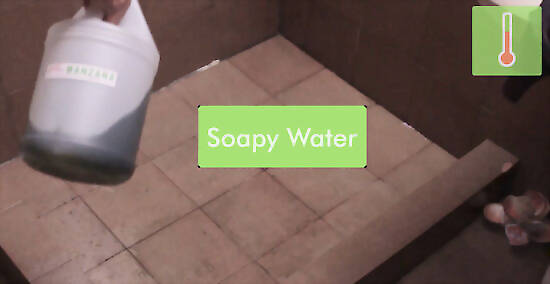
Sweep and mop the floor. Start with the farthest point from the door. Sweep up all the dust and debris you've cleaned so far and let fall on the floor, then mop using hot soapy bleach water. Remember to rinse the floor with clean water to remove slippery soap residue. Be sure to get along the sides of your toilet bowl where it is anchored to the floor. This area is notoriously dirty. Don't forget to clean the base boards or base molds these places usually accumulates a lot of dust.
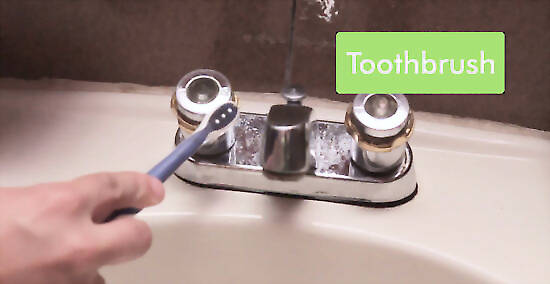
Use an old toothbrush to scrub small spaces. Find an unwanted old toothbrush and wash it thoroughly. Get rid of all excess toothpaste gunk that may be on it. Apply a small amount of bleach or other counter-safe cleaning product to the toothbrush. Scrub away! The toothbrush helps to get in areas that are narrow or need very detailed scrubbing.
Keeping the Bathroom Clean
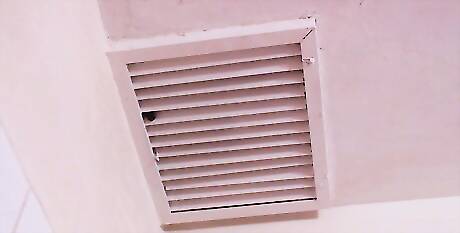
Run the fan. Keeping your bathroom ventilated will discourage the growth of mildew, keeping your big cleaning sessions few and far between. Always run the fan after you get out of the shower, to dry out the bathroom and keep the moisture from clinging. You may also want to take apart the fan once in a while, vacuum out the inside of it, soak the blade in a 50:50 mixture of vinegar and water, and then wipe down the blade and cover. This will help to ensure that the fan is working at full capacity.
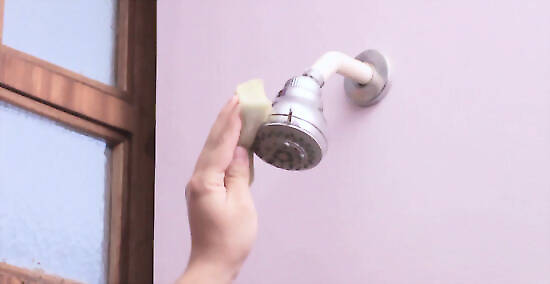
Wipe down the shower after you use it. To make sure mold and mildew doesn't build up in the shower in between big cleaning sessions, take time to wipe it down every time you take a shower. Combined with running the fan, this should keep your bathroom mildew free.
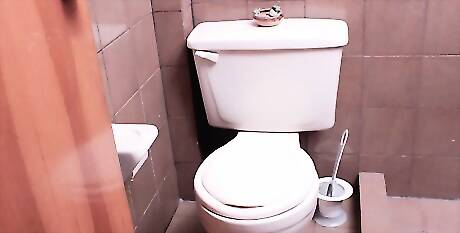
Keep it tidy. Much of what we call "mess" is really just clutter. If clothes accumulate in your bathroom, put a hamper, or even a cardboard box in the bathroom to collect dirty clothes. Use a toothbrush holder or a cup to keep your toothbrushes in order. Keep other supplies in an old shoebox under the sink to keep the surface tidy.

Use the toilet brush. Even if it doesn't look dirty, minerals in the water can stain the bowl, so it's a good idea to brush the toilet down with a sturdy toilet brush regularly. If you do this even just once a week, your bigger cleanings will be much easier and infrequent.
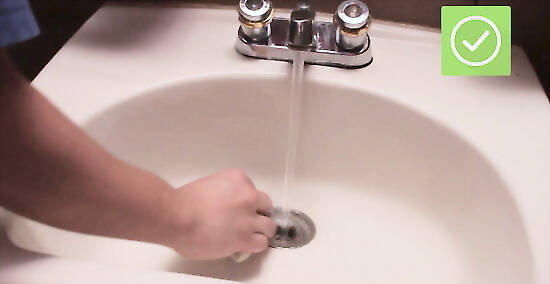
Wash toothpaste down. Toothpaste stains and build up in the sink and even on the mirror can make a bathroom look dirtier than it needs to be. Make sure you clean up after your toothpaste, washing it down and rinsing the sink out, then drying the bowl of the sink when you're finished. To consolidate tasks, do this while you mouthwash for an added dental benefit.











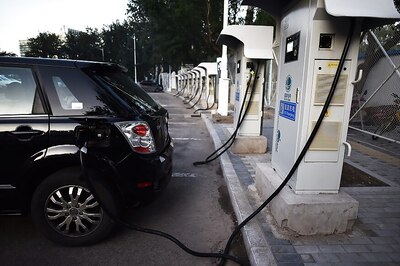



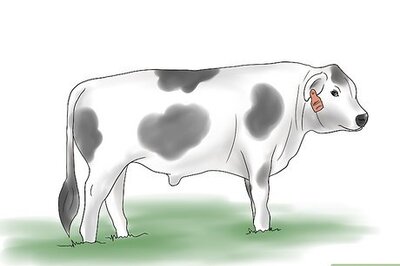
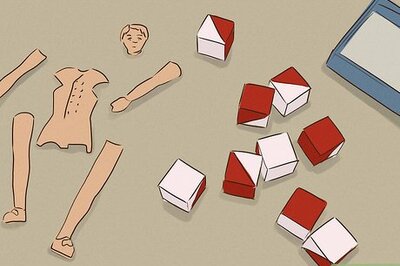
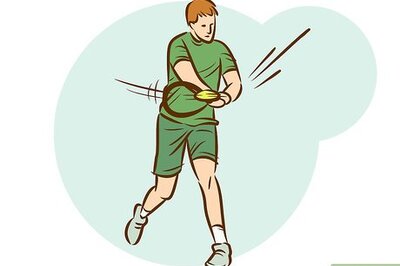

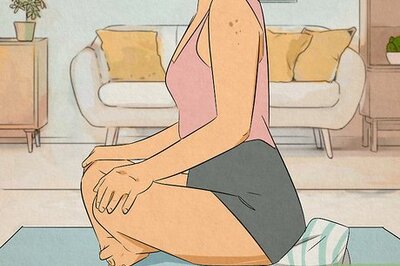
Comments
0 comment